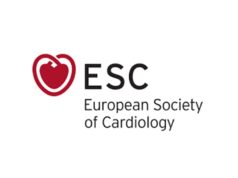Women diagnosed with breast cancer are significantly more likely to develop atrial fibrillation (AF) compared to women without cancer, according to research published in the European Heart Journal. These patients have a three-fold increased risk of death from either heart or blood vessel problems within one year, the researchers found.
The observational study is the first to evaluate health impacts and deaths associated with AF following a breast cancer diagnosis. A total of 85,423 women aged 66 years or older who were diagnosed with breast cancer between 2007 and 2014 were analysed within the study. In the one-year period after diagnosis, 4% of patients developed AF. These women were matched with women without breast cancer (n=85,423), and only 2% of these women developed AF over the same time period.

The research also found that patients who developed AF after a breast cancer diagnosis had a threefold increased risk of death from either heart or blood vessel problems within one year. Women who did not receive surgery or radiation as their primary therapy course developed a higher rate of AF compared to women who received these treatments: 23.5% vs. 10.4%, and 66.5% vs. 52.3%, respectively. Despite this, complicated surgery such as mastectomy was associated with an increased risk when compared to lower-risk procedures such as lumpectomy. Furthermore, women who received brachytherapy had half the risk of developing atrial fibrillation than women who received external beam radiation.
Women who presented advanced disease (15% for stage IV disease) at diagnosis, had a higher atrial fibrillation incidence than women who presented early-stage disease (6%). Within the first 60 days after breast-cancer diagnosis, the AF rate was the highest, with 0.6% of women developing the condition.
The incidence of AF was higher in women who had advanced disease at the time of diagnosis than in women who had the early-stage disease (6%). The rate of AF was highest in the first 60 days after a breast cancer diagnosis, with 0.6% of women developing the condition, while 0.3% developed it every 30 days thereafter during the one-year follow-up.
Data were collected from the Medicare programme and linked to the SEER database, which collects data on cancer for around 35% of the USA population.
Avirup Guha (assistant professor of medicine at Case Western Reserve University, Cleveland, USA) who led the study, said: “There has been a significant increase in the number of women who survive breast cancer, but increased heart and blood vessel problems have become limitations of optimal outcomes. While atrial fibrillation in people without cancer is associated with an overall poor prognosis until now little has been known about outcomes from the condition after a breast cancer diagnosis.
“Our study has provided multiple insights. However, the two most stark findings are that atrial fibrillation after breast cancer diagnosis increases deaths from heart and blood vessel problems, and that cancer severity is a strong risk factor for the development of atrial fibrillation” said Guha.
When analysing women who already had presented AF before breast-cancer diagnosis, no significant increased risk of dying from any cause within one year of diagnosis was found. Of these women, approximately 85% were still alive after one year, whereas only 62% of women who developed AF after a breast cancer diagnosis survived for one year.
The research team adjusted factors that may affect the results, such as age, other medical conditions, and history, obesity, and type of breast cancer, before concluding that women who developed atrial fibrillation within the first 30 days after a breast cancer diagnosis, were twice as likely to die from any cause within one year as women who had AF prior to a breast cancer diagnosis.
Though the research is unable to illustrate the mechanisms which may be involved in the increased risk of developing AF, however, surgery, chemotherapy, inflammation, and imbalances in the body’s normal processes caused by the cancer may be implicated. The researchers speculate that because advanced breast cancer was associated with an increased risk of AF, this suggests the breast cancer may be affecting the heart.
There are numerous areas in which it would be beneficial for future research to include Guha explained. “Future research could involve investigating the following questions: would giving cardiovascular medication to all new breast cancer patients reduce the risk of atrial fibrillation and death? Should these patients be monitored to rule out atrial fibrillation? Could a prospective study show that specific cancer treatments and their duration in the first one or two months after a cancer diagnosis may be associated with an increased likelihood of atrial fibrillation?” he said.
“An important point is that those with existing atrial fibrillation were not at increased risk of dying after breast cancer diagnosis compared to those who did not develop atrial fibrillation. This may be because they were already well managed from a cardiovascular standpoint. Therefore, it is possible that involvement of cardio-oncology in the care of breast cancer patients may mitigate the mortality outcomes noted in this study.”
Taking this into consideration, the study population size and ethnic diversity of the population are strengths. Despite this, the study only looked at women aged 66 and over, so the findings may not apply to younger populations; the study is based on medical claims rather than data gathered in the clinic; the prevalence of obesity may have been under-reported; and the study followed the patients for only one year. This is important to consider as chronic heart problems caused by radiation treatment may only become evident after longer follow-up, research suggests.









